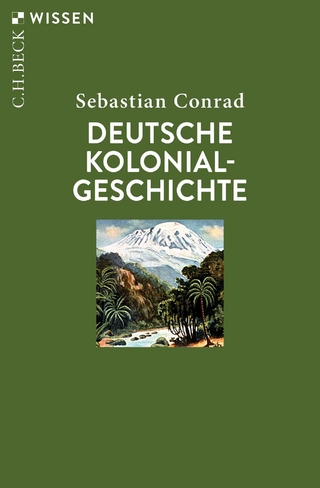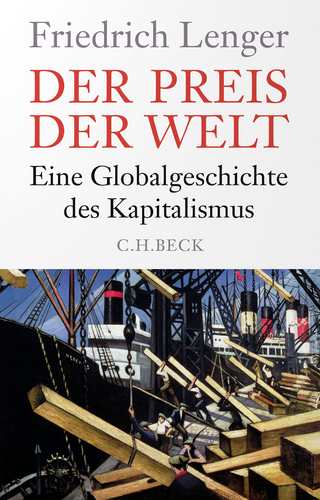
Banking on the State
Stanford University Press (Verlag)
978-1-5036-0967-9 (ISBN)
Banking on the State reveals how the financial foundations of Lebanon were shaped by the history of the standardization of economic practices and financial regimes within the decolonizing world. The system of central banking that emerged was the product of a complex interaction of war, economic policies, international financial regimes, post-colonial state-building, global currents of technocratic knowledge, and private business interests. It served rather than challenged the interests of an oligarchy of local bankers. As Hicham Safieddine shows, the set of arrangements that governed the central bank thus was dictated by dynamics of political power and financial profit more than market forces, national interest or economic sovereignty.
Hicham Safieddine is Lecturer in the History of the Modern Middle East at King's College London.
Contents and Abstracts1Introduction: Illusions of Financial Independence chapter abstractThe introduction highlights the fact that although insightful studies of colonizing projects and postcolonial Arab state formation in a late and post-Ottoman context have covered the realms of education, military, law, civic space, and, later, the economy, Lebanese finance has rarely if ever been studied. This book addresses that lacuna. It explores the role of central banking in the making of Middle Eastern states both at the level of challenging dominant ideologies of political economy, like Michel Chiha's laissez-faire paradigm, and at the level of rethinking institution-building in relation to private lobbying groups like the Association of Banks in Lebanon and government regulatory structures like the central bank. The introduction offers an alternative reading of Lebanon's political economy that shies away from the fetishized invocation of sectarianism as a primary explanatory variable of historical change.
2The Long Monetary Mandate chapter abstractChapter 2 traces the evolution of central banking in Lebanon first under the Ottoman Imperial bank (BIO) and later under French occupation. The BIO's successor, the Banque de Syrie et du Liban (BSL), became the primary institutional guardian of a long French monetary mandate over Lebanon and Syria. Colonial authority guaranteed BSL legitimacy and its privileged position within an emerging national space. In return, BSL policies reproduced the dominance of French capital in the money market. More broadly, mandatory financial regulations, including BSL policies, played a central role in the formation of a new monetary space stretching from Lebanon to Iraq that underpinned the emergence of what is best described as heteronomous national economies.
3Central Bank Reform: Ideas and Institutions chapter abstractThe conflict over Lebanon's financial regulatory regime and economic orientation was not only of interests, but also of ideas. Chapter 3 explores the role of a group of "money doctors" at the International Monetary Fund and the American University of Beirut who tried to argue for economic reform and banking regulation after World War II. They challenged the dominant paradigm of laissez-faire espoused by followers of Michel Chiha in public fora like the Cénacle libanais and acted as emissaries of global currents of thought, namely, a modified version of economic institutionalism as propounded by the U.S. economist Wesley Mitchell. The chapter examines the ideal central bank prototypes that they believed "underdeveloped" countries like Lebanon should adopt.
4Barons of Banking: The Untouchables chapter abstractChapter 4 recounts the conflict within the bankers' ranks and vis-à-vis state technocrats and government ministers over the form and extent of banking regulation during the post–World War II post–World War II "merchant republic" era." The chapter examines failed projects of setting up development banks and traces the transformation of the banking community into an organized and powerful lobby thanks to the efforts led by the Eddé brothers, Raymond and Pierre. The former introduced banking secrecy legislation. The latter spearheaded the formation of the association of banks in Lebanon (ABL) in 1959, the first of its kind in the Arab world. The ABL managed to prevent central banking reform from tampering with the laissez-faire system at the basis of its power and prestige.
5Banque du Liban: A Façade of Economic Sovereignty: chapter abstractChapter 5 analyzes the making of the central bank in relation to the social reform project of Lebanese President Fuad Chehab (in office 1958–64), which was inspired by contemporary trends of state-led management of national economies. It is a comparative examination of the provisions of the 1964 Law of Money and Credit, which acted as the primary legal framework of Lebanon's financial regulatory system and monetary policy. The law laid out the statutes establishing the BDL and outlining its monetary policy mandate and management structure. Placed in the context of Arab financial reform, the chapter shows how the BDL under the direction of the former BIO official Joseph Oughourlian retained a degree of managerial autonomy vis-à-vis the government and the banks. Such autonomy that reflected Chehab's philosophy of planned laissez-faire.
6Suits and Shadows: The Intra Affair chapter abstractChapter 6 investigates the crash of one the region's top banks, Intra, which became a subject of conspiracy theories. The crisis took place two years after the BDL's inauguration and exposed the fragility of the financial system. It reflected the degree to which the Lebanese state lacked economic sovereignty and robust financial control. The chapter shows how the collapse of Intra, founded by the Palestinian-Lebanese businessman Yusif Beidas, was the product of structural transformation of the world's political economy combined with contingent historical developments and conspiratorial actions. Regionally, the outflow of Arab capital away from Beirut was intertwined with Arab Cold War political rivalries between Cairo and Riyadh. Locally, the structural limitations of the newly founded central banking system combined with the decision by Lebanese governing elites to sink Intra in order to save their market share and the laissez-faire system sustaining it.
7Financial Regime Change: The Last Refuge of Laissez-faire chapter abstractThe Intra crisis was itself a turning point in shaping the regulatory role of the BDL. The chapter traces the supranational policy networks that impacted the decision-making process. Aided by American experts like Roger Tamraz and Eugene Black, legal restructuring of the sector took place. Reforms included a temporary ban on entry to the banking sector, which led to international capital taking over local shares, as well as the introduction of a deposit insurance scheme. These new measures led to the emergence of banker-bureaucrats and banker-technocrats like Elias Sarkis, who was appointed BDL governor, and Salim Hoss, the first head of the Banking Control Commission. Both, among others, oversaw construction of a new financial regulatory regime that institutionalized and protected rather than overhauled laissez-faire well after the civil war that broke out in 1975, the closing point of the book.
8Conclusion: Sovereign Debt, Sovereign Banks chapter abstractBy the end of the civil war, Lebanon had become internationally synonymous with a failed state and endemic sectarian violence. State institutions including the military, the judiciary, the presidency, parliament, and public education were seen as weak, corrupt, partisan, or powerless. The conclusions show how, by contrast, the central bank remained largely resilient in the face of war, significantly autonomous from government intervention, and relatively immune to sectarian manipulation. Thanks to debt-dependent postwar reconstruction projects implemented by Prime Minister Rafic Hariri and financial engineering policies designed by the BDL's governor, Riad Salameh, Lebanese banks were able to secure a steady source and high level of profit via sovereign lending. Throughout Hariri's era and following his assassination in 2005, the BDL and the big banks remained key decision-makers in managing the debt, the currency, and the money market.
| Erscheinungsdatum | 23.10.2018 |
|---|---|
| Reihe/Serie | Stanford Studies in Middle Eastern and Islamic Societies and Cultures |
| Verlagsort | Palo Alto |
| Sprache | englisch |
| Maße | 152 x 229 mm |
| Themenwelt | Sachbuch/Ratgeber ► Geschichte / Politik ► Allgemeines / Lexika |
| Geisteswissenschaften ► Geschichte ► Allgemeine Geschichte | |
| Geisteswissenschaften ► Geschichte ► Regional- / Ländergeschichte | |
| Geschichte ► Teilgebiete der Geschichte ► Wirtschaftsgeschichte | |
| ISBN-10 | 1-5036-0967-7 / 1503609677 |
| ISBN-13 | 978-1-5036-0967-9 / 9781503609679 |
| Zustand | Neuware |
| Haben Sie eine Frage zum Produkt? |
aus dem Bereich


